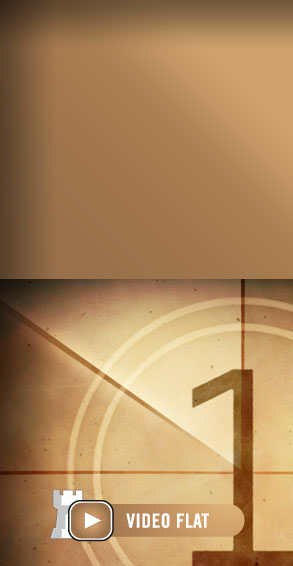Can one say that you are a professional chess player?
Yeah, definitely. I live from chess, but not as a player, but as a trainer, coach, author, organizer, and as a presenter. At ChessBase, for example, I have a weekly show.
As a coach, you're carrying on your father's tradition...
When I was a small kid, my father and I were new to the chess world but then my father became interested in psychology and didactics. He raised the local chess culture to a higher level here in Apeldoorn and was always keen to find out how one could develop further. Not only as a chess player, but also as a human being. When I was about 14 years old, I gave chess lessons for the first time and when I moved to Amsterdam to study at the age of 18, teaching became more important than my own chess career. My father and I described our experiences from these early times of learning, playing and teaching chess in our book Developing Chess Talent.
You just published a new book: "Mastering Positional Sacrifices". Why did you not write an opening book? Opening books sell a lot better, don't they?
I also like to deal with opening theory, because I am very interested in strategy in general. But I am especially interested in positional sacrifices, a fascinating and increasingly important topic in modern chess. For me it is all connected. Of course, I would be happy when the book sells well, but that was not my main motivation for writing it. I wanted to record systematically what I know about the subject.

Merijn van Delft
How long did you work on the book?
I have been collecting beautiful games and examples for decades and last summer I finally worked out the structure of the book in detail. When I had the structure, it took only a few months to write it. Much quicker than writing my final thesis at university!
Very briefly, the difference between positional and tactical sacrifice is...?
Tactical sacrifices usually aim for quick success, mostly to mate the king. Positional sacrifices are long-term. You give material but you get other advantages in return, e.g. good pieces, a good pawn structure or control of important squares.
When did you have the idea to turn your interest in the topic into a book?
I asked New in Chess if they could imagine to publish such a book. Allard Hoogland was immediately interested and said, sure, come by and we'll discuss it. Peter Boel became my editor, and since he is an old friend from Apeldoorn, working with New in Chess was very pleasant. From time to time Allard and Peter came up with an idea but otherwise I just did my thing – an ideal arrangement.
How is the book structured?
The book is 300 pages long and in the first nine chapters I present 115 model games. Chapter 10 contains 48 tasks related to the topic. When I planned the book, I wanted to to create a clear structure that would enable the reader to grasp and understand the subject. The first four chapters are practically a basic course about positional sacrifices. Then things get more challenging and I deal with various sacrifices that have become standard, for example the exchange sacrifices in the Benko Gambit and in the Sicilian. These are covered in Part Two, in chapters five and six. The third part is particularly exciting. In chapters seven to nine I have examined how far one can go with positional sacrifices. I also showed how the strong modern engines treat positional sacrifices.

In practical games the motifs usually do not appear in their pure form. Often there are other motifs which obscure the clear view of the main theme. How did you go about that?
The main motif must be clearly visible in the model games. When I was in doubt, I omitted such unclear games. Of course, practice is always more complicated, but the first thing to do is to learn what topics there are, ideally in a clear form.
How did you find the model games?
For years I have collected model games with positional sacrifices because I was fascinated by this topic. My teammates and chess friends know my passion and if they see a nice game with a positional sacrifice, they often send it to me. The games in the book are from this collection.
Did you pick a lot of classical games?
There are of course some classics that you just can't ignore. But I wanted to select less well-known illustrative games, including some older ones. Some classics, for example the famous game Reshevsky-Petrosian, Zurich 1953, have been published so often that I preferred to turn it into an exercise.
Here is an example of a game that I found very instructive.
What technical aids did you use?
The book is completely written with the ChessBase program. I have examined and tested all games very intensively with the cloud versions of Leela and Stockfish. So all positional assessments and variations are computer-checked. Here, the ChessBase Engine Cloud is a fantastic tool. Using the engines of other chess enthusiasts and their super machines costs a few ducats, but you get reliable results very quickly.
_REPLACE_BY_ADV_1
_REPLACE_BY_ADV_2
Why two engines?
The architectures of the two engines are very different. Leela - you could also take FatFritz, which is basically the same - very quickly offers a coherent basic assessment. The program is very stable in its judgment. But there are sometimes blind spots in regard to tactics. Here Stockfish helps with the blunder check. But: Most of these lines I did not put into the book. Instead, I have explained the sacrificial patterns and when they work. I wanted to understand these sacrifices and I wanted to pass this knowledge on to the reader in an accessible way. I tell the chess story of the respective games.
You are a bit of a wanderer between the worlds, at home in Apeldoorn/Amsterdam and in Hamburg...
Yes, I like it in both worlds. For me German and Dutch cultures are very similar. Well, in football we have a long-standing rivalry but the cultural differences are actually not that big. Chess also connects.
In Apeldoorn we have a Denksportcentrum, a center for mind sports, which can be found in all major Dutch cities. In 2018 we had GM tournament there and we are also planning another one. But always with supporting events, especially for children and young people, to promote chess. I am also the tournament organizer of the Batavia tournament in Amsterdam. There, too, the social character of the event is in the foreground. Chess can be very integrating. I also think that chess players do a lot in this field.
Tnank you very much for the interview and good luck with your book.
Thank you very much.
Questions: André Schulz, traducido del alemán al inglés: Johannes Fischer
Enlaces
























